


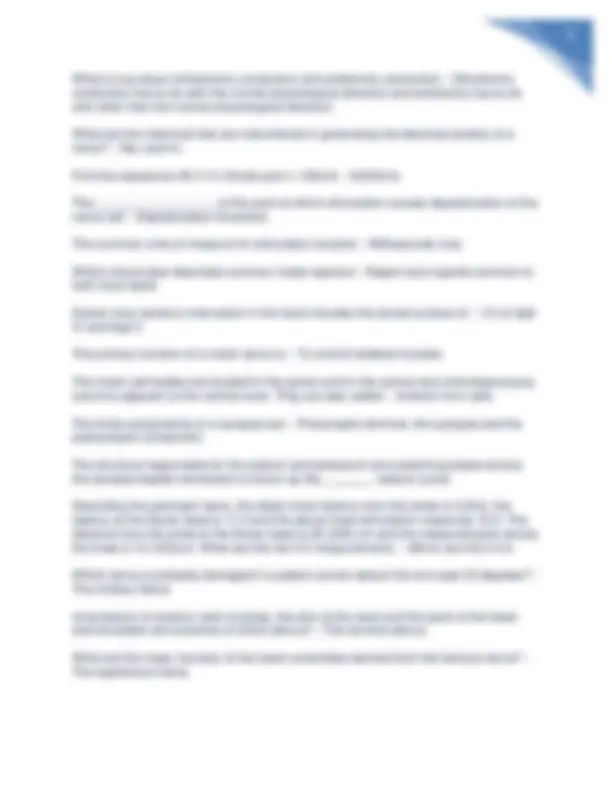

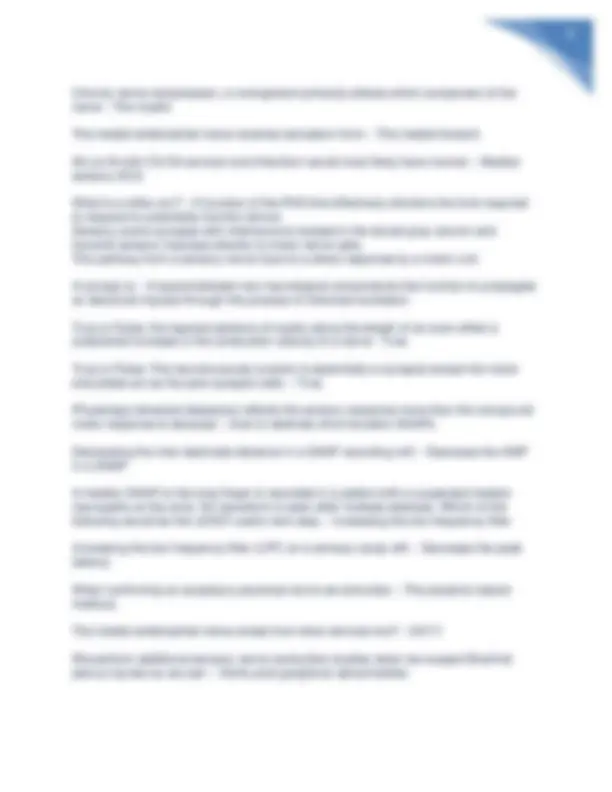
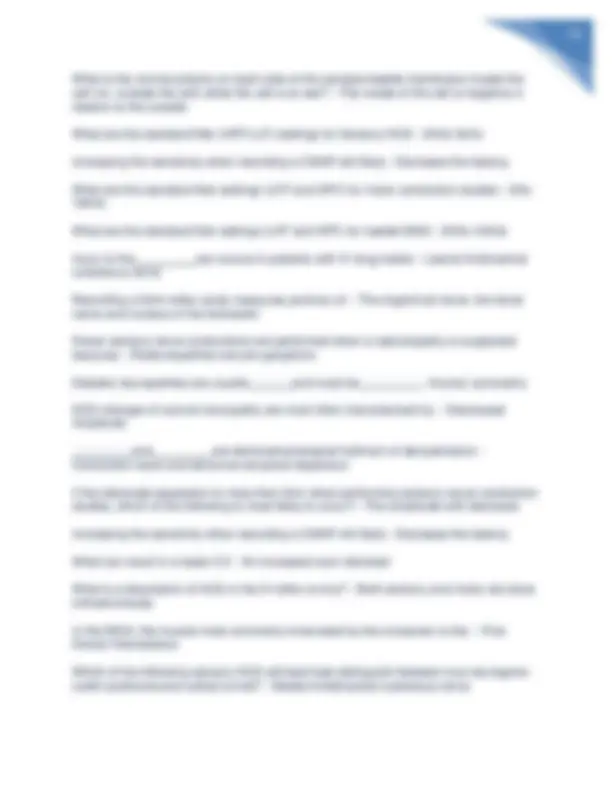
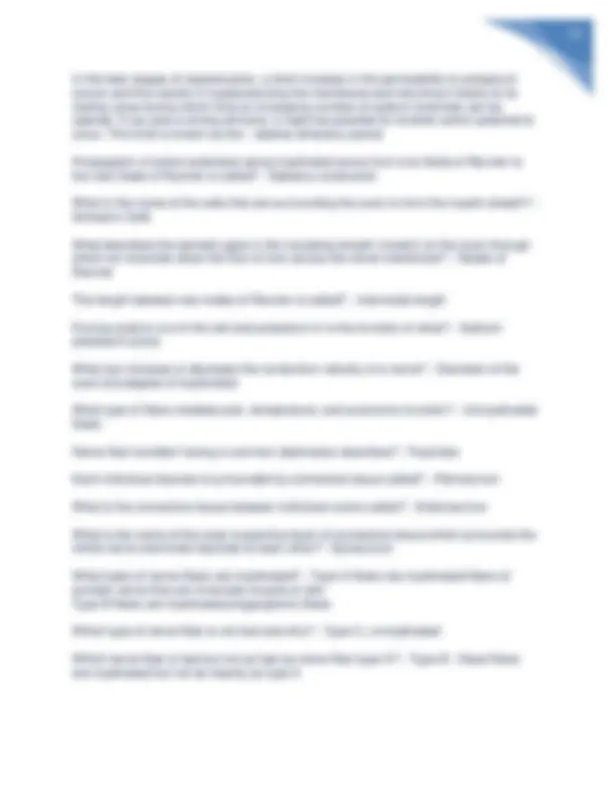
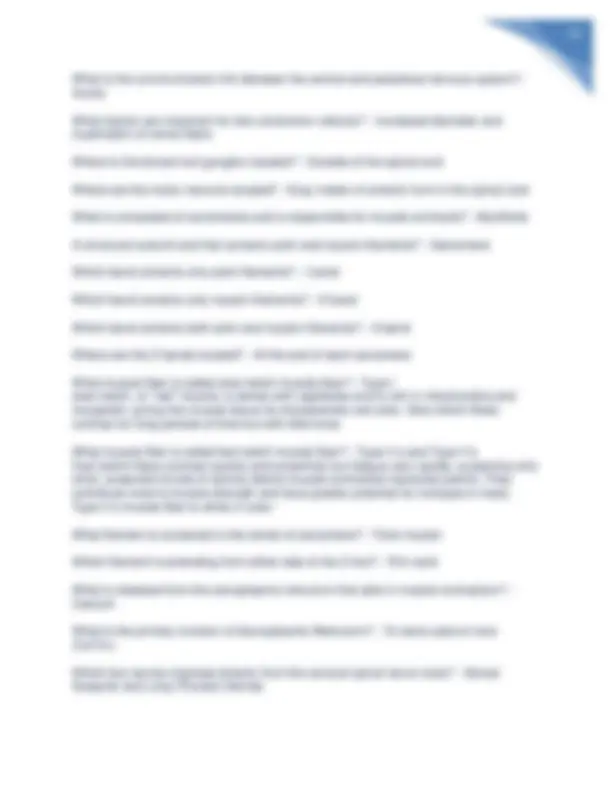


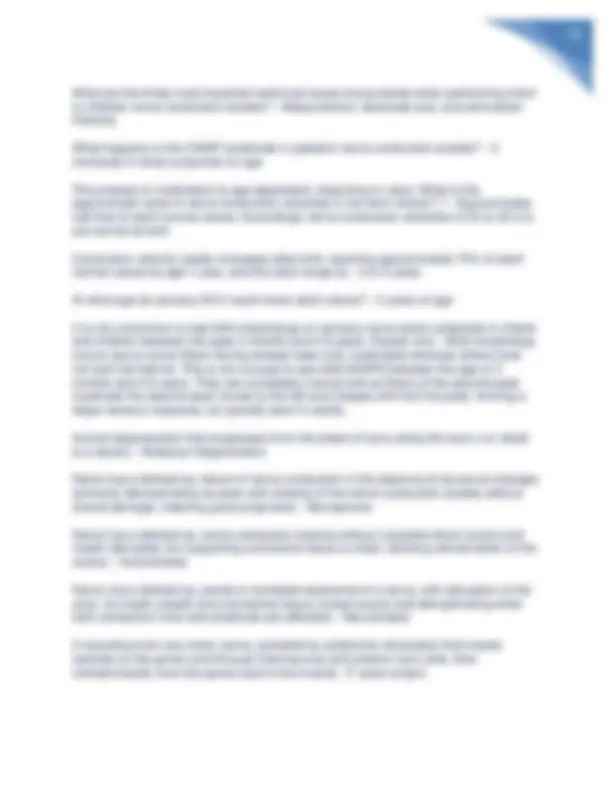

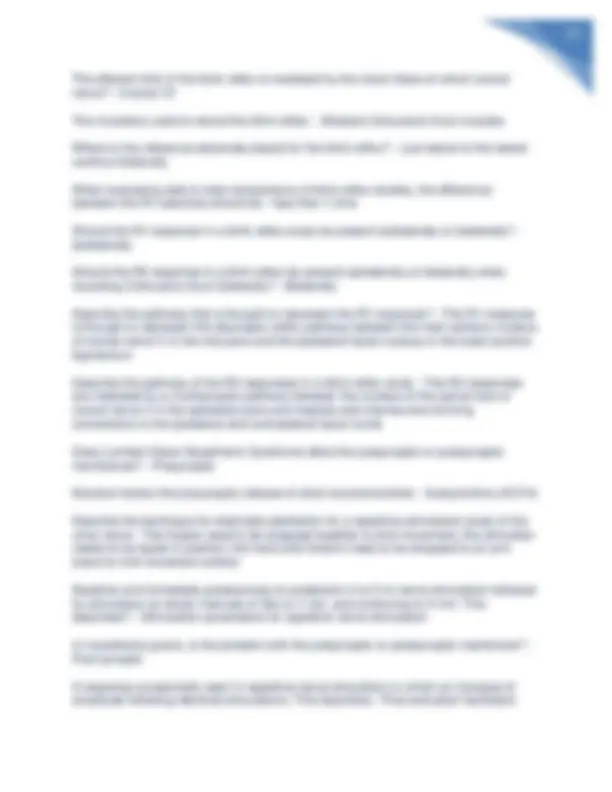
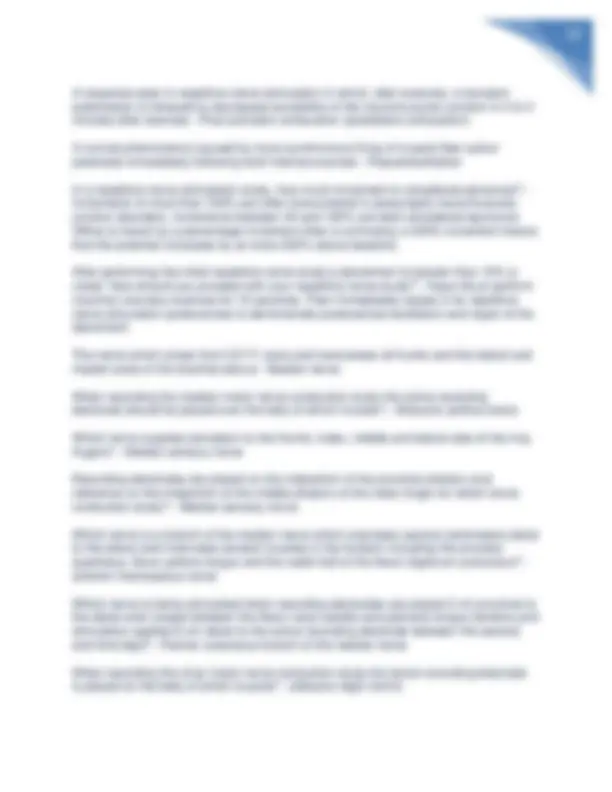
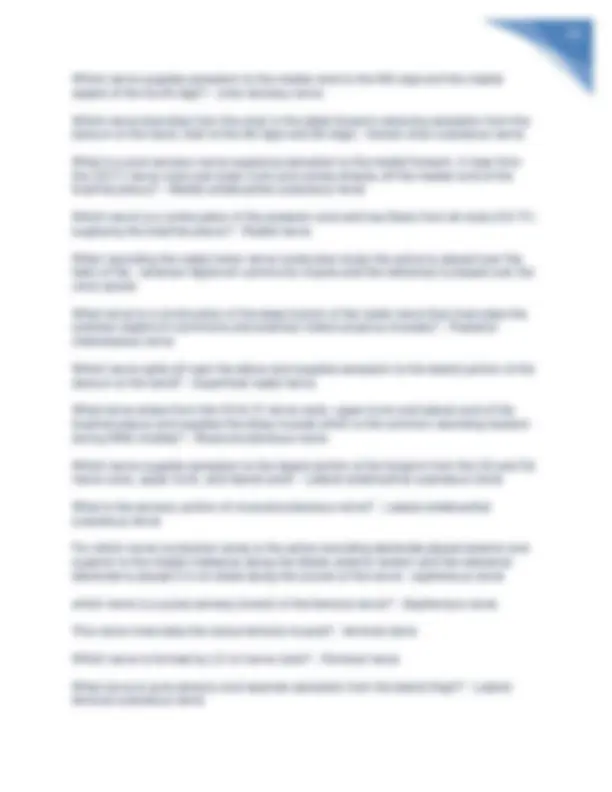
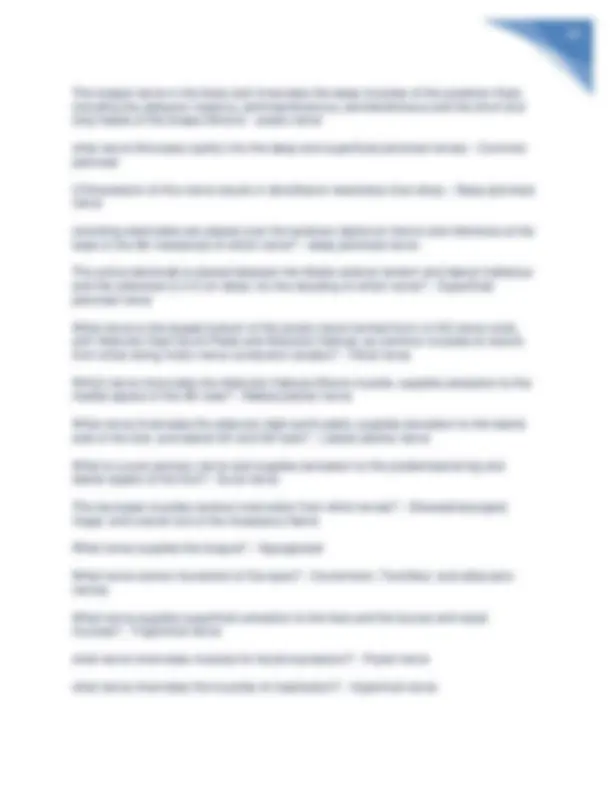
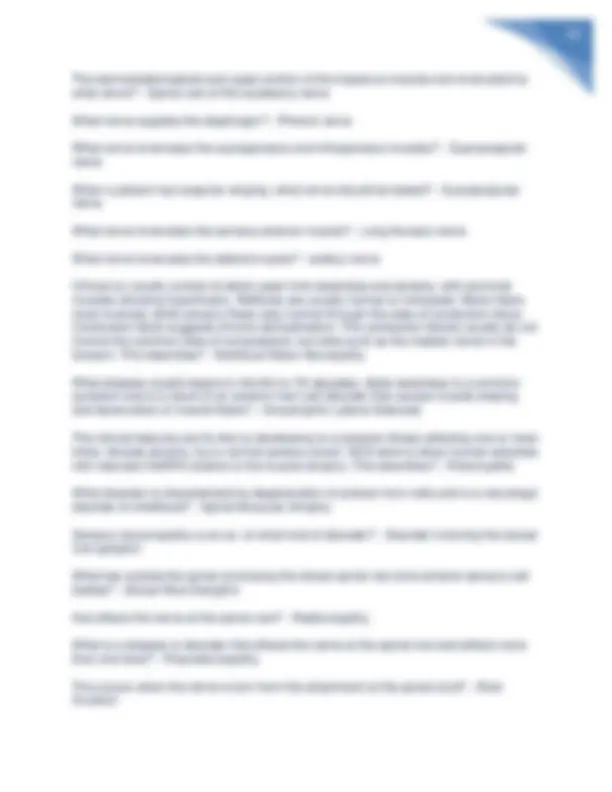
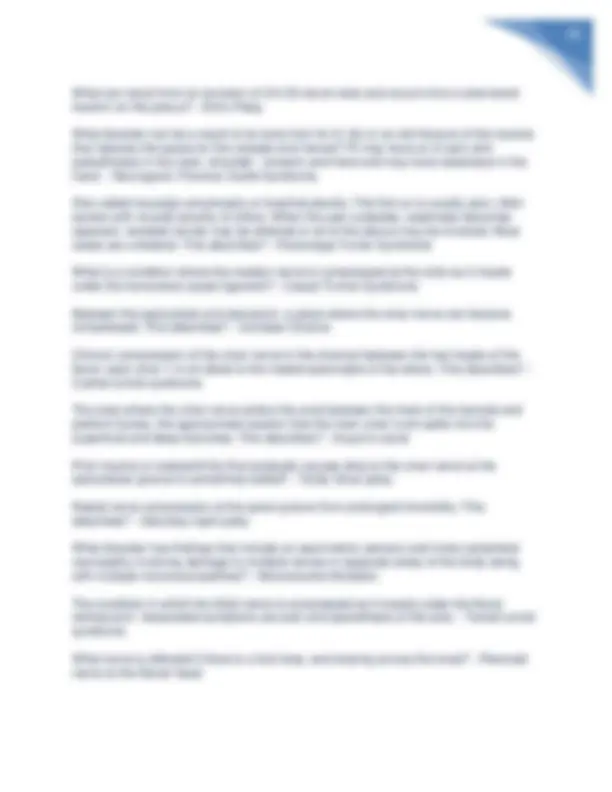
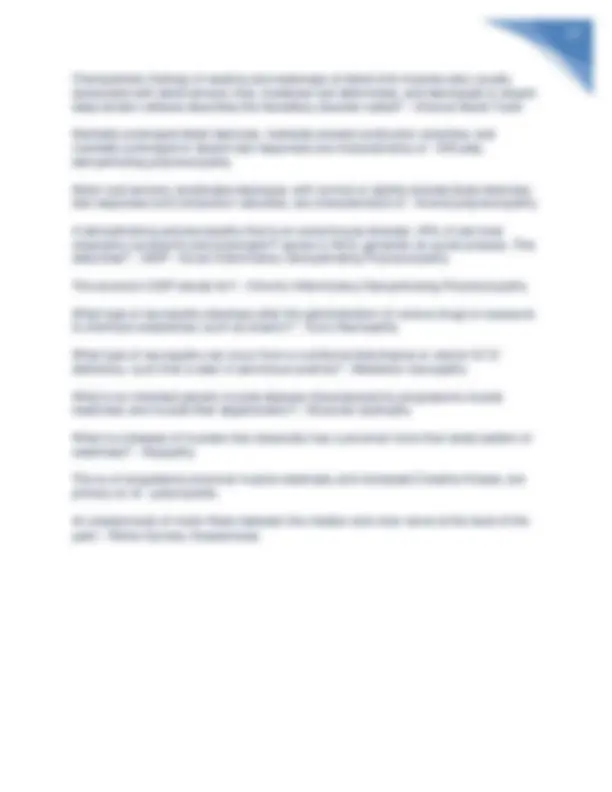


Study with the several resources on Docsity

Earn points by helping other students or get them with a premium plan


Prepare for your exams
Study with the several resources on Docsity

Earn points to download
Earn points by helping other students or get them with a premium plan
Community
Ask the community for help and clear up your study doubts
Discover the best universities in your country according to Docsity users
Free resources
Download our free guides on studying techniques, anxiety management strategies, and thesis advice from Docsity tutors
AAET registry exam + Flashcards Exam Study questions with correct answers 2023-2025/AAET registry exam + Flashcards Exam Study questions with correct answers 2023-2025/AAET registry exam + Flashcards Exam Study questions with correct answers 2023-2025
Typology: Exams
1 / 27

This page cannot be seen from the preview
Don't miss anything!




















When the synaptic vesicles are electrically stimulated by a nerve impulse, synaptic vesicles gravitate to the outer membrane of the presynaptic wall and release acetylcholine into the synaptic cleft. The Ach molecules migrate to the postsynaptic cells where they attach to the specific receptors. When enough neurotransmitters are received by the receptors to overcome the firing threshold a CMAP is generated causing muscle contraction. This describes - The events that occur in the Neuromuscular Junction What happens to the neurotransmitters after they have attached themselves to receptors and generated the muscles to contract? - They are chemically broken down by enzymes and recycled back to the presynaptic terminals Maximal stimulation is appropriate for , while supramaximal stimulation (not over stimulation) is necessary in recordings. - SNC, MNC Martin Gruber Anastomosis is seen when there is a: - Crossover of median fibers to ulnar fibers in the forearm Define Afferent nerves: - From the periphery to the cord Important muscles innervated by the axillary nerve - the Deltoids Important muscles in the upper arm that are innervated by the radial nerve - The triceps Which nerve innervates the posterior thigh, leg muscles, planter foot muscles and skin of the foot - The tibial nerve Cell bodies of sensory neurons are housed in - The dorsal root ganglion Which term means the specific region of skin belonging to a single spinal root - A Dermatome The nerve most likely to be injured in fractures of the medial epicondyle is the: - Ulnar nerve
After a time when a motor nerve to a muscle is sectioned the muscles atrophy. If you notice that the thenar muscles are atrophied which nerve is suspected of injury? - The median nerve
is a natural chemical sorting of potassium and sodium ions across the semipermeable membrane surround the nerve cell - Active transport Define Efferent nerves - From the brain and cord to the periphery The important muscles ( APB, opponens pollis bravis, and flexor pollis brevis) innvervated by the median nerve in the hand and collectively are called the muscles - Thenar An example of an AIDP is - Guillain-Barre syndrome The ulnar nerve originates from the nerve roots - C8-T Numbness to the skin on the lateral half of the palm of the hand would be caused by a lesion to which nerve? - Median nerve The ulnar nerve arises from the cervical roots C8-T1, travels through the trunk and medial cord - Lower Important muscles innervated by the posterior interosseous (radial) nerve are: - The Extensor indicis Proprius and Extensor digitorum communis (EIP, EDC) The superficial peroneal nerve recieves sensation from: - The dorsum of the foot The is a pure motor response and can be recorded from any skeletal muscle
The is the point at which stimulation causes depolarization of the What is true about orthodromic conduction and antidromic conduction - Othodromic conduction has to do with the normal physiological direction and antidromic has to do with other than the normal physiological direction. What are two chemical that are instrumental in generating the electrical polarity of a nerve? - Na+ and K+ Find the resistance (R) if V=12volts and I= 100mA - 120Ohms nerve cell. - Depolarization threshold The common units of measure for stimulation duration - Milliseconds (ms) Which choice best describes common mode rejection - Reject input signals common to both input leads Dorsal ulnar sensory innervation in the hand includes the dorsal surface of: - 1/2 of digit IV and digit V The primary function of a motor nerve is: - To control skeletal muscles The motor cell bodies are located in the spinal cord in the ventral and ventrolateral gray columns adjacent to the ventral roots. They are also called: - Anterior horn cells The three components of a synapse are: - Presynaptic terminal, the synapse and the postsynaptic component. The structure responsible for the sodium and potassium ions switching places across the semipermeable membrane is known as the - sodium pump Recording the peroneal nerve, the distal motor latency form the ankle is 5.0ms, the latency at the fibular head is 11.0 and the above knee stimulation measures 13.3. The distance from the ankle to the fibular head is 29 (290) cm and the measurements across the knee is 10 (100)cm. What are the two CV measurements. - 48m/s and 43.5 m/s Which nerve is probably damaged if a patient cannot abduct the arm past 25 degrees? - The Axillary Nerve Innervations of anterior neck muscles, the skin of the neck and the parts of the head and shoulders are branches of which plexus? - The cervical plexus What are the major nerve(s) of the lower extremities derived from the femoral nerve? - The saphenous nerve
The musculocutaneous nerve travels through trunk and the cord - The Entrapment of the suprascapular nerve at what level causes isolated atrophy of he infraspinatus muscle? - Spinglenoid notch An anomalous accessory peroneal nerve, when present, innervates the: - EDB The Roots of the brachial plexus are actually: - The anterior RAMI of the spinal nerves upper trunk and lateral cord An f-wave is a time measurement of the antidromic stimulus to travel to the anterior horn cell in the spinal cord through the and back to the muscle thus called a long latency response - Interneurons The major muscle innervation of the plantar nerve is the - The abductor digiti quinti pedis Nerve CV is least affected by - Antidromic conduction In neuromuscular transmission, which ion responsible for facilitating the fusion of acetylcholine (ACH) containing vesicles with the presynaptic membrane of the axon terminal resulting in the release of ACH into the neuromusclular cleft - Ca++ The Median nerve goes through the cord(s) - the medial and lateral cords "Motor end plate" is the EMG'ers name for the: - Neuromuscular Junction What are the standard filter settings (LFF and HFF) for sensory conductions? - 20Hz- 3kHz Type A nerve fibers are further subdivided in four groups. The subgroups are based on size and CV. The four groups are: - Alpha- largest and fastest Beta- Second largest and fastest Gamma- Next to smallest and slowest Delta- smallest and slowest Saturday night palsy, an accurate compression neuropathy is a good example of: - Neurapraxia A HFF of 500hz on a sensory NCS would cause the onset latency to: - Stay the same In examining a patient with brachial plexopathy, the deltoid and triceps are weak, but the biceps and pronator tres are normal. The lesion is best localized to the: - The posterior cord
The study that is most helpful differentiating a brachial plexus lesion from nerve root avulsion is: - SNAP Amp A lesion of the ulnar never at guyon's canal, before it splits into the superficial and deep branch, will NOT cause the following: - Sensory loss over the medial dorsal hand The following are characteristics of hereditary motor sensory neuropathy Type I - Conduction block is evidant The dermatome of the thumb is innervated by nervous elements arising from which spinal cord segments? - C Loss of sensation in a single dermatome on one side of the body could indicate damage to a spinal nerve or to: - The dorsal root ganglion When stimulating the suprascapular nerve at Erb's point we record over one of both of the following muscles - Supraspinatus and infraspinatus What is an example of othodrimic sensory response - Ulnar tranpalmer study with stimulation between the 4th and 5th metacarpals and recording on the medial aspect of the wrist adjacent to the flexor carpi ulnaris tendon Patients with MG show an electrical abnormality on Rep Stim called a decrement. This means there is a decrease in after the first response to a train of stimuli - Amplitude What is the charge of an electron? - 1.6x10- 19 Coulombs/sec Coulomb's law states: - Like charges repeal and opposite charges attract We measure the nerve conduction of the VII cranial nerve. We call this the - Facial nerve Wallerian Degeneration is seen: - In both axonotmesis and neurotmesis The accessory peroneal anomaly occurs when: - The EDB derives additional innervation from the accessory peroneal nerve that wraps around the lateral malleous The lateral antebrachial cutaneous nerve is - An extension of the musculocutaneous nerve recieving sensation from the lateral forearm Surgery will probably be necessary to fix a(n) nerve injury - Neurotmesis Polyneruopathies can be described as: - - Axonal and Demyelinating
Diabetic neuropathies are usually and must be - Axonal, symmetric What is the normal polarity on each side of the semipermeable membrane (inside the cell vrs. outside the cell) while the cell is at rest? - The inside of the cell is negative in relation to the outside What are the standard filter (HFF/LLF) settings for Sensory NCS - 20Hz-3kHz Increasing the sensitivity when recording a CMAP will likely - Decrease the latency What are the standard filter settings (LFF and HFF) for motor conduction studies - 2Hz- 10kHz What are the standard filter settings (LFF and HFF) for needle EMG - 20Hz-10kHz Injury to the can occure in patients with IV drug habits - Lateral Antibrachial cutaneous nerve Recording a blink reflex study measures portions of: - The trigeminal nerve, the facial nerve and nucleus of the brainstem Fewer sensory nerve conductions are performed when a radiculopathy is suspected because: - Radiculopathies are pre-ganglionic NCS changes of axonal neuropathy are most often characterized by: - Decreased Amplitude and are electrophysiological hallmark of demyelination - Conduction block and abnormal temporal dispersion If the electrode separation is more then 2cm when performing sensory nerve conduction studies, which of the following is most likely to occur? - The amplitude with decrease Increasing the sensitivity when recording a CMAP will likely - Decrease the latency What can result in a faster CV - An increased axon diameter What is a description of NCS in the H-reflex is true? - Both sensory and motor are done orthodromically In the MGA, the muscle most commonly innervated by the crossover is the: - First Dorsal interosseous Which of the following sensory NCS will best help distinguish between true neurogenic outlet syndrome and cubital tunnel? - Medial Antebrachial cutaneous nerve
Failure to adequately warm a limb prior to performing NCS may - Decrease the AMP of the SNAP What describes an atom in which the total number of electrons is not equal to the total number of protons, giving the atom a net positive or negative electrical charge - Ion What is the negatively charged particle in an atom? - Electron What has neutral particles, along with protons, and is found in the nucleus of an atom? - Neutrons Which particles of an atom are positively charged? - Protons What makes up the elements found in all matter? - Atoms What is the voltage inside the nerve cell membrane in a resting membrane potential? - - 90 to - 70mV What is the major ion outside a cell membrane? - Sodium What is the major ion inside a cell membrane? - Potassium What is the physiological term when depolarization occurs it causes a muscle and/or nerve fiber to either respond to a stimulus completely if it reaches threshold or no response if the depolarization is insufficient to reach threshold? - All or non response What describes changing from a resting potential or polarized state to an excited state?
In the later stages of repolarization, a brief increase in the permeability to potassium occurs and this results in hyperpolarizing the membrane and returning it slowly to its resting value during which time an increasing number of sodium channels can be opened. If you give a strong stimulus, it might be possible for another action potential to occur. This time is known as the - relative refractory period Propagation of action potentials along myelinated axons from one Node of Ranvier to the next Node of Ranvier is called? - Saltatory conduction What is the name of the cells that are surrounding the axon to form the myelin sheath? - Schwann Cells What describes the periodic gaps in the insulating sheath (myelin) on the axon through which ion channels allow the flow of ions across the nerve membrane? - Nodes of Ranvier The length between two nodes of Ranvier is called? - Internodal length Forcing sodium out of the cell and potassium in is the function of what? - Sodium- potassium pump What can increase or decrease the conduction velocity of a nerve? - Diameter of the axon and degree of myelination What type of fibers mediate pain, temperature, and autonomic function? - Unmyelinated fibers Nerve fiber bundles' having a common destination describes? - Fascicles Each individual fascicle is surrounded by connective tissue called? - Perineurium What is the connective tissue between individual axons called? - Endoneurium What is the name of the outer supportive layer of connective tissue which surrounds the whole nerve and binds fascicles to each other? - Epineurium What types of nerve fibers are myelinated? - Type-A fibers are myelinated fibers of somatic nerve that can innervate muscle or skin Type B fibers are myelinated preganglionic fibers Which type of nerve fiber is not fast and why? - Type C, unmyelinated Which nerve fiber is fast but not as fast as nerve fiber type A? - Type B - these fibers are myelinated but not as heavily as type A
What is the communication link between the central and peripheral nervous system? - Axons What factors are important for fast conduction velocity? - Increased diameter and myelination of nerve fibers Where is the dorsal root ganglion located? - Outside of the spinal cord Where are the motor neurons located? - Gray matter of anterior horn in the spinal cord What is composed of sarcomeres and is responsible for muscle contracts? - Myofibrils A structural subunit and that contains actin and myosin filaments? - Sarcomere Which band contains only actin filaments? - I band Which band contains only myosin filaments? - H band Which band contains both actin and myosin filaments? - A band Where are the Z bands located? - At the end of each sarcomere What muscle fiber is called slow twitch muscle fiber? - Type I slow twitch, or "red" muscle, is dense with capillaries and is rich in mitochondria and myoglobin, giving the muscle tissue its characteristic red color. Slow twitch fibers contract for long periods of time but with little force What muscle fiber is called fast-twitch muscle fiber? - Type II a and Type II b Fast twitch fibers contract quickly and powerfully but fatigue very rapidly, sustaining only short, anaerobic bursts of activity before muscle contraction becomes painful. They contribute most to muscle strength and have greater potential for increase in mass. Type II b muscle fiber is white in color. What filament is contained in the center of sarcomere? - Thick myosin Which filament is extending from either side of the Z line? - Thin actin What is released from the sarcoplasmic reticulum that aids in muscle contraction? - Calcium What is the primary function of Sarcoplasmic Reticulum? - To store calcium ions (Ca^2+) Which two nerves originate directly from the cervical spinal nerve roots? - Dorsal Scapular and Long Thoracic Nerves
The current flows in one path and is the same flowing through each resistor and can be directly added together to calculate a net resistance. This best describes? - Resistors in series The process of generating a binary number proportional to the value of the analog input voltage. This best describes? - Analog to Digital conversion There are lines or dots on the screen that represent divisions and correspond with the current sensitivity and sweep speed (timebase). The vertical divisions (top to bottom) represent - amplitude and we refer to this as? - Vertical resolution There are lines or dots on the screen that represent divisions and correspond with the current sensitivity and sweep speed (timebase). The horizontal divisions (left to right) represent - latency or time - we refer to this as? - Horizontal resolution The computer rewrites the analog line into a series of dots from which the line is recreated. This is called analog to digital conversion and these dots are called? - Data points In NCS, what describes the summation of the traces by the total number of traces collected in an effort to eliminate background noise? - Averaging What describes the effect of passing some bands of frequencies while attenuating others? - Filtering Effects Varied fast and slow fibers cancel one another as one phase of the slow fibers reach the recording electrode, as the trailing phase of the fastest fibers pass the same recording electrode causing an apparent loss of amplitude. - Phase cancellation The hardware component used to increase the size of the small physiologic signal: - amplifier What describes the parameters of 2-10 hz (motor) and 20-30 Hz (sensory) and eliminates or attenuates (reduces) unwanted slow frequencies? - Low frequency filters What describes the parameters of 5-20 kHz (motor) and 2-3 kHz (sensory) and eliminates or attenuates (reduces) unwanted fast frequencies? - High frequency filters What describes the horizontal measurement of time displayed on the screen? - Sweep speed/time base What describes the vertical measurement of amplitude of the waveform on the screen?
What type of stimulator delivers an adjustable current through the stimulating electrodes independent of their impedance? - Constant current What describes the amount of electrical energy applied to produce a measureable response measured in volts or milliamps? - Intensity What describes the length of time a stimulus is applied; measured in milliseconds and limited to a maximum of 1 msec? - Duration The negative terminal of the stimulating electrode. - Cathode The positive terminal of the stimulating electrode - Anode What describes the process when hyperpolarization occurs under the anode preventing the depolarization that occurs under the cathode from passing, thus causing a reduction in resting potential? - anodal block What describes the process when stimulation spreads to nearby nerves resulting in erroneous results? - Volume conduction What describes an unwanted electrical signal that obscures the desired response recorded at the time the stimulus is applied? - Stimulus artifact What describes when an increase in stimulus no longer increases the size of the response?? - Supramaximal stimulation A nerve root lesion proximal to the dorsal root ganglia, best describes? - Preganglionic A nerve root lesion distal to the dorsal root ganglia best describes? - Postganglionic Which nerve root lesions have NCS findings that indicate absent motor responses and preserved sensory responses? - Pre ganglionic Which nerve root lesions have NCS findings that indicate absent motor responses and absent sensory responses? - Post ganglionic What are the effects of a preganglionic lesion? - Most often, the lesion represents root avulsion from the spinal cord. The muscles supplied by the nerve root will atrophy. Surgical repair is impossible. Preganglionic injuries have limited spontaneous recovery. What describes the length of time a stimulus is applied; measured in milliseconds and limited to a maximum of 1 msec? - Duration The NCS term for lesions in a specific and definable location; usually found with short distance nerve conduction studies and are usually demyelinating lesions - Focal
What are the three most important technical issues encountered when performing infant or children nerve conduction studies? - Measurement, electrode size, and stimulation intensity What happens to the CMAP amplitude in pediatric nerve conduction studies? - It increases in direct proportion to age The process of myelination is age dependent, beginning in utero. What is the approximate value of nerve conduction velocities in full-term infants?? - Approximately half that of adult normal values: Accordingly nerve conduction velocities of 25 to 30 m/s are normal at birth Conduction velocity rapidly increases after birth, reaching approximately 75% of adult normal values by age 1 year, and the adult range by - 3 to 5 years At what age do sensory NCV reach mean adult values? - 5 years of age It is not uncommon to see bifid morphology on sensory nerve action potentials in infants and children between the ages 3 months and 4-6 years. Explain why - Bifid morphology occurs due to some fibers having already been fully myelinated whereas others have not and trail behind. This is not unusual to see bifid SNAPS between the age of 3 months and 4-6 years. They are completely normal and as fibers of the second peak myelinate the second peak moves to the left and merges with the first peak, forming a larger sensory response, as typically seen in adults. Axonal degeneration that progresses from the place of injury along the axon (i.e. distal to a lesion) - Wallerian Degeneration Nerve injury defined as, failure of nerve conduction in the absence of structural changes (primarily demyelinating as seen with slowing of the nerve conduction studies without axonal damage, meaning good prognosis) - Neurapraxia Nerve injury defined as, nerve conduction slowing without complete block (axons and myelin disrupted, but supporting connective tissue is intact, allowing reinnervation of the axons) - Axonotmesis Nerve injury defined as, partial or complete severance of a nerve, with disruption of the axon, its myelin sheath and connective tissue (mixed axonal and demyelinating when both conduction time and amplitude are affected) - Neurotmesis A recording from any motor nerve, activated by antidromic stimulation that travels centrally to the spinal cord through interneurons and anterior horn cells, then orthodromically from the spinal cord to the muscle - F wave (origin)
Does the F wave response travel centrally in the motor or sensory fibers?>> - Motor fibers When performing an F wave should you use submaximal stimulation or supramaximal stimulation? - Supramaximal stimulation In the upper extremity, when the median or ulnar nerves are stimulated at the wrist, the F response usually occurs at a latency of - 25 - 32 m Which has a longer latency, the F wave or the M wave - F wave What percentage of muscle fibers are represented by an F wave - 1 - 5% In order to avoid habituation of the F response, one should stimulate at a rate no faster than once ever - 2 seconds A submaximal stimulus that arises from large Ia afferents of the muscle activates a monosynaptic reflex arc. These afferent impulses travel up the sensory fibers and enter the dorsal horn of the spinal cord. After entering the dorsal horn of the spinal cord, the Ia afferents synapse with the alpha motor neurons that activate that muscle and a CMAP is produced completing the reflex arc. This describes: - H reflex (circuity) When performing an H reflex, should you use a submaximal or supramaximal stimulus?